#hkw
Text






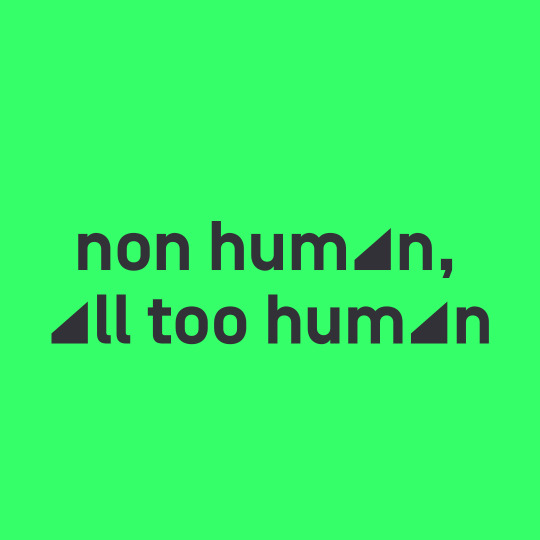


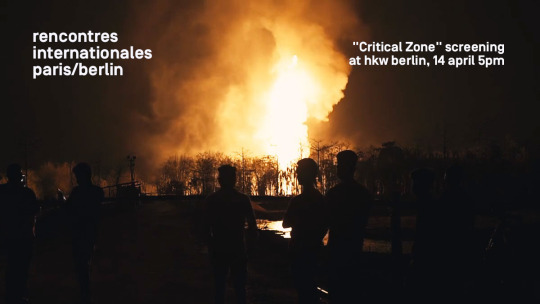


🌈 Closing, Sunday, 14 April 🌱
Happening now, another exciting day at HKW until 8pm.
⚡ 14:00-19:00 "Love and Its Double" "Singular Community," and "VR Lab" special exhibition
⚡ 13:00 "Living Currency"
⚡ 15:00 "Non Human, All Too Human"
⚡ 17:00 "Critical Zone"
⚡ 19:00 "Shifting Boundaries" (Closing Screening)
Detailed programme: https://www.art-action.org/prog
#ripb2024#closing#newcinema#contemporaryart#berlin#HKW#video#multimedia#screening#artworks#experimental#art#cinema
0 notes
Text
EXERCISES IN TRANSFORMATION

https://www.hkw.de/en/programme/exercises-in-transformation-sergio-zevallos
0 notes
Text

Acts of Decontextualising Again: On the Risks of Auto-Exoticism in “O Quilombismo” at House of World Cultures
Katerina Valdivia Bruch
What do the Dalit in India have in common with indigenous art from the Amazonas region in Perú, the Mapuche from Chile or the Afro-communities in Brazil? Resistance, resistance, resistance.
The exhibition “O Quilombismo” takes as a basis a book by Brazilian artist, scholar and politician Abdias do Nascimento, who wrote “O quilombismo: Documentos de uma militância Pan-Africanista” in 1980, while he was living in exile in the US. The notion encompasses the idea of a group of people, who escaped from slavery, establishing communities of “fraternal and free reunion, or encounter; solidarity, living together, and existential communion.”
In Berlin, under the term “Quilombismo” the exhibition presented works that refer to the Dalit, indigenous groups from the Amazonas region in Perú and the Mapuche in Chile, as if all have to do with the same cause. While the caste system existed before the British colony (ca. 1500 BC), the “quilombos” were communities created by Afro-Brazilians, who escaped from slavery in the sixteenth century. Another example of decontextualisation happens with the inclusion of art by popular artists from the Amazonas region (the shipibo-conibo community from Pucallpa). These and other indigenous groups suffered from the consequences of the rubber boom extractivism in the Amazon basin (ca. 1870-1920). Although they officially were not slaves, they were treated as such. The exhibition puts everything in the same basket, without differentiating the importance and the meaning of each one of these struggles.
The display resembles a traditional folk craft fair, with batik textiles hanging from the ceiling, traditional “arte popular” (popular art) pottery displayed on a half-moon base structure with two levels, or hand-woven textiles attached on the walls. Although the exhibition offers a supposed “pluriverse,” for me it presents a closed circuit, in which minorities are presented as the idealised exotic other. The artists are reduced to their identity, although identities are newer static. They are always in constant transformation. The opening ceremony included a Voodoo ritual, convened by the Voodoo priest Jean-Daniel Lafontant from Haití. While this ritual might have had a transformative power in its original context; in Berlin after two or three beers and some selfies with friends (with the ritual in the background), Berliners would have probably forgotten about it.
“We are coming in peace,” said Bonaventure Soh Bejeng Ndikung, the newly appointed director and chief curator of House of World Cultures (Haus der Kulturen der Welt, HKW for its German acronym) during his opening speech. Although he has been active in the art scene for several years, his phrase appeared as if he and his team were arriving from a spaceship and landing at HKW to conquer the art scene with their “new” vision of the arts. However, his view of the arts is not new at all, as it is based on theories developed long time ago.
Beyond Abdias do Nascimento, throughout the 1970s and 1980s several Latin American art theorists discussed the importance of focusing on local contexts, which included reflecting on the local popular cultures with an anti-colonial and anti-imperialist tenor. Influenced by the theory of dependency, a group of Latin American theorists gathered in different international meetings and reflected on the creation of a social theory of art from a Latin Americanist perspective. Among them were Mirko Lauer, Juan Acha, Rita Eder, Aracy Amaral, Damián Bayón or Marta Traba. Although the discussions around “arte popular” (local popular art) were not exempt from contradictions, there were attempts to present popular art within contemporary exhibition settings. For instance, the first three editions of the Bienal de la Habana (1984, 1986 and 1989). Knowing this, I wonder why the curators at HKW did not invest more time in researching this Latin Americanist perspective, and present works that would be in tune with the localist and anti-colonial tendency of the arts of that time.
Today, it is common in the art world to decontextualise, in order to present the past from a “new” and “different” perspective. In this show, instead of going deeper into what “Quilombismo” means, the exhibition mixes completely unrelated topics in the same show. Additionally, one needs to check the reader all the time to find out about the works and the artists. Instead of learning and understanding, I came out of the exhibition with a huge question mark, thinking of what it was all about.
Although the art world is currently working hard on being “inclusive,” the fact is that we are experiencing censorship in the arts. This is exemplified in the constant exposure of the work by Ukrainian artists and Ukrainian flags waving on top of important museums; while Russian artists are not exhibited (since the current war in Ukraine, everything coming from Russia is considered as evil). While Berlin praises itself for being open to people from different cultural backgrounds, a week ago I witnessed a disappointing situation. On a rooftop terrace close to Berlin Zoo, two Muslim men were sitting in silence doing their afternoon prayer. After a few minutes, a waiter from the nearby bar came out and asked them to stop praying and leave the terrace. While the two men were not disturbing anyone, I wonder whose inclusion we are discussing.
In times of Chat GPT and AI, in the art world it is all about “our ancestors.” And yet, whose ancestors are we talking about? Did the ancestors do things better? Was there a paradise in the past that we need to recover? Paradoxically, the ancestors invented patriarchy and the caste system. Instead of putting people into boxes, defining them by their identity, and decontextualising the history of past social struggles, one shall think about what we have in common as human beings; collaborate despite our differences, and reflect on possibilities on how to do things better than our ancestors.
Image: Installation view of “O Quilombismo” at HKW. Photo: Katerina Valdivia Bruch
0 notes
Text

Acts of Decontextualising Again: On the Risks of Auto-Exoticism in “O Quilombismo” at House of World Cultures
Katerina Valdivia Bruch
What do the Dalit in India have in common with indigenous art from the Amazonas region in Perú, the Mapuche from Chile or the Afro-communities in Brazil? Resistance, resistance, resistance.
The exhibition “O Quilombismo” takes as a basis a book by Brazilian artist, scholar and politician Abdias do Nascimento, who wrote “O quilombismo: Documentos de uma militância Pan-Africanista” in 1980, while he was living in exile in the US. The notion encompasses the idea of a group of people, who escaped from slavery, establishing communities of “fraternal and free reunion, or encounter; solidarity, living together, and existential communion.”
In Berlin, under the term “Quilombismo” the exhibition presented works that refer to the Dalit, indigenous groups from the Amazonas region in Perú and the Mapuche in Chile, as if all have to do with the same cause. While the caste system existed before the British colony (ca. 1500 BC), the “quilombos” were communities created by Afro-Brazilians, who escaped from slavery in the sixteenth century. Another example of decontextualisation happens with the inclusion of art by popular artists from the Amazonas region (the shipibo-conibo community from Pucallpa). These and other indigenous groups suffered from the consequences of the rubber boom extractivism in the Amazon basin (ca. 1870-1920). Although they officially were not slaves, they were treated as such. The exhibition puts everything in the same basket, without differentiating the importance and the meaning of each one of these struggles.
The display resembles a traditional folk craft fair, with batik textiles hanging from the ceiling, traditional “arte popular” (popular art) pottery displayed on a half-moon base structure with two levels, or hand-woven textiles attached on the walls. Although the exhibition offers a supposed “pluriverse,” for me it presents a closed circuit, in which minorities are presented as the idealised exotic other. The artists are reduced to their identity, although identities are newer static. They are always in constant transformation. The opening ceremony included a Voodoo ritual, convened by the Voodoo priest Jean-Daniel Lafontant from Haití. While this ritual might have had a transformative power in its original context; in Berlin after two or three beers and some selfies with friends (with the ritual in the background), Berliners would have probably forgotten about it.
“We are coming in peace,” said Bonaventure Soh Bejeng Ndikung, the newly appointed director and chief curator of House of World Cultures (Haus der Kulturen der Welt, HKW for its German acronym) during his opening speech. Although he has been active in the art scene for several years, his phrase appeared as if he and his team were arriving from a spaceship and landing at HKW to conquer the art scene with their “new” vision of the arts. However, his view of the arts is not new at all, as it is based on theories developed long time ago.
Beyond Abdias do Nascimento, throughout the 1970s and 1980s several Latin American art theorists discussed the importance of focusing on local contexts, which included reflecting on the local popular cultures with an anti-colonial and anti-imperialist tenor. Influenced by the theory of dependency, a group of Latin American theorists gathered in different international meetings and reflected on the creation of a social theory of art from a Latin Americanist perspective. Among them were Mirko Lauer, Juan Acha, Rita Eder, Aracy Amaral, Damián Bayón or Marta Traba. Although the discussions around “arte popular” (local popular art) were not exempt from contradictions, there were attempts to present popular art within contemporary exhibition settings. For instance, the first three editions of the Bienal de la Habana (1984, 1986 and 1989). Knowing this, I wonder why the curators at HKW did not invest more time in researching this Latin Americanist perspective, and present works that would be in tune with the localist and anti-colonial tendency of the arts of that time.
Today, it is common in the art world to decontextualise, in order to present the past from a “new” and “different” perspective. In this show, instead of going deeper into what “Quilombismo” means, the exhibition mixes completely unrelated topics in the same show. Additionally, one needs to check the reader all the time to find out about the works and the artists. Instead of learning and understanding, I came out of the exhibition with a huge question mark, thinking of what it was all about.
Although the art world is currently working hard on being “inclusive,” the fact is that we are experiencing censorship in the arts. This is exemplified in the constant exposure of the work by Ukrainian artists and Ukrainian flags waving on top of important museums; while Russian artists are not exhibited (since the current war in Ukraine, everything coming from Russia is considered as evil). While Berlin praises itself for being open to people from different cultural backgrounds, a week ago I witnessed a disappointing situation. On a rooftop terrace close to Berlin Zoo, two Muslim men were sitting in silence doing their afternoon prayer. After a few minutes, a waiter from the nearby bar came out and asked them to stop praying and leave the terrace. While the two men were not disturbing anyone, I wonder whose inclusion we are discussing.
In times of Chat GPT and AI, in the art world it is all about “our ancestors.” And yet, whose ancestors are we talking about? Did the ancestors do things better? Was there a paradise in the past that we need to recover? Paradoxically, the ancestors invented patriarchy and the caste system. Instead of putting people into boxes, defining them by their identity, and decontextualising the history of past social struggles, one shall think about what we have in common as human beings; collaborate despite our differences, and reflect on possibilities on how to do things better than our ancestors.
Image: Installation view of “O Quilombismo” at HKW. Photo: Katerina Valdivia Bruch
0 notes
Text


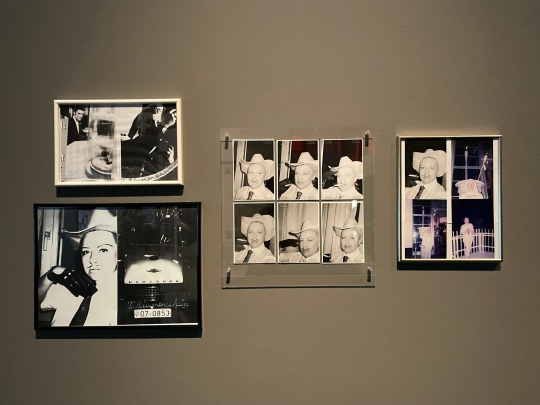
HKW Tabea Blumenschein 'no master territories' townes
0 notes
Video
NO MASTER TERRITORIES by fetisch Terranova
Via Flickr:
Tabea Blumenschein 19.6.22 HKW NO MASTER TERRITORIES
0 notes
Text
does mikey just not put the bass down?

854 notes
·
View notes
Text

I really like MXES, its design is dope as hell ngl
#my art#fnaf#illustration#not an ask#fnaf security breach#fnaf sb#five nights at freddy's#fnaf sb ruin#fnaf sb dlc#fnaf sb dlc spoilers#fnaf mxes#m.x.e.s.#and a small cassie#as a treat#had to make some attempts to see hkw i want to draw this guy#i like it tho#cool as fuck design#shame no-one has written a x reader fic yet#mxes my beloved#how do y'all think it's even spelled?#i say 'em-ks-es' but i am not sure it is correct?
532 notes
·
View notes
Text
you have no idea hkw much this makes me sad
ive been looking forward to tad week every saturday
its nearing saturday and i no longer have my source of joy


#kusuriyanohitorigoto#maomao#kusuriya anime#theapothecarydiaries#maomao and jinshi#jinshi#love#jinmao#anime#aesthetics#kusuriya no hitorigot#kusuriya no hitorigoto#saiki kusuo#muu kusunoki#akira kusuru#knh fanart#knh anime#knhedit#knh spoilers#knh maomao#knh jinshi#the apothecary diaries#lakan#lihaku#the apothecary diaries manga#maomao x jinshi#apothecary diaries#starday#you have no idea hkw much this makes me sad#ive been looking forward to tad week every saturday
73 notes
·
View notes
Text
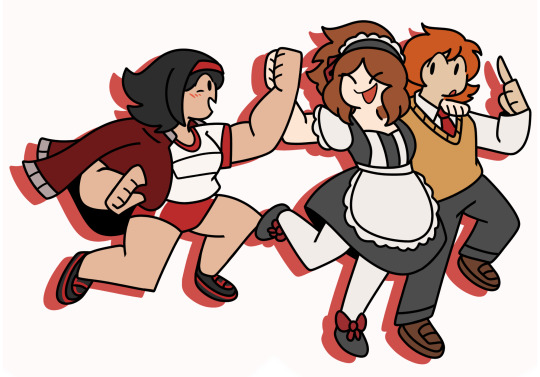
Aaaand we're back to the trio's shenanigans + we get to see more off the other people from class 79 which is fun since we haven't seen what some of these guys since chapter 4 so it's kinda been a while
#we are getting dangerously close to the deadly life segment#I'm actually starting to get excited about writing the trial instead of the usually#“oh god oh fuck” nervousness i had while thinking of hkw the fuck i would write a trial when i started this fic#I'll make it through I'm sure#dra -2+2#dra#danganronpa another#ayame hatano#akane taira#yuki maeda#hyena scribbles
99 notes
·
View notes
Text


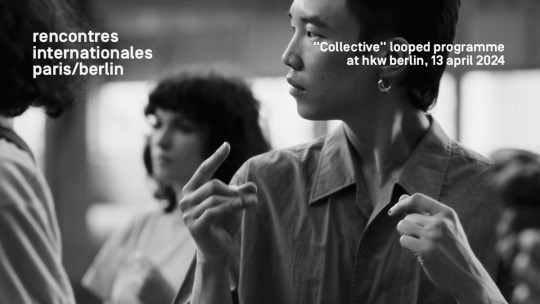



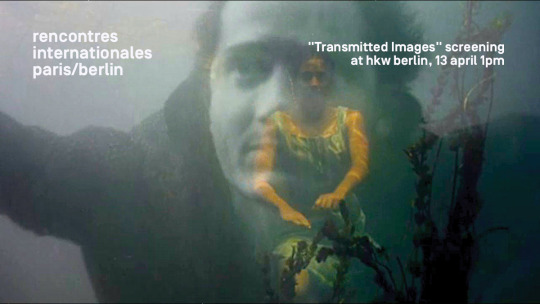




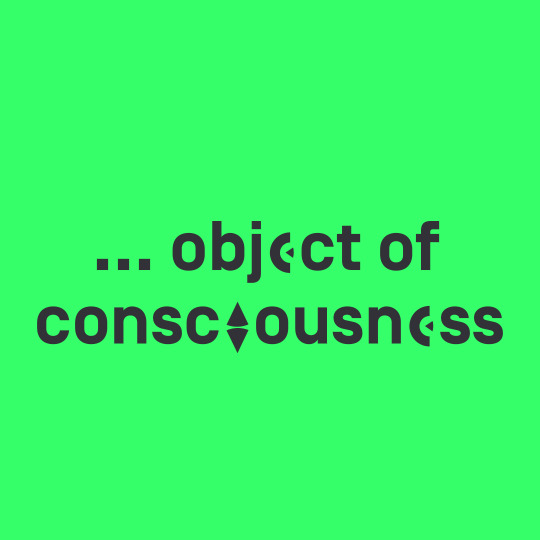
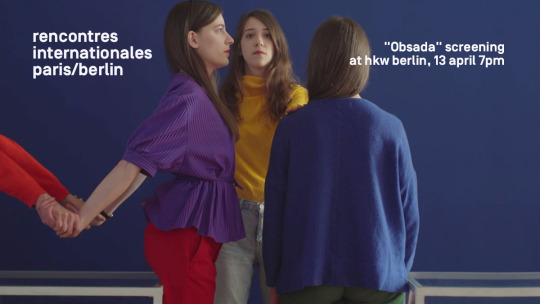

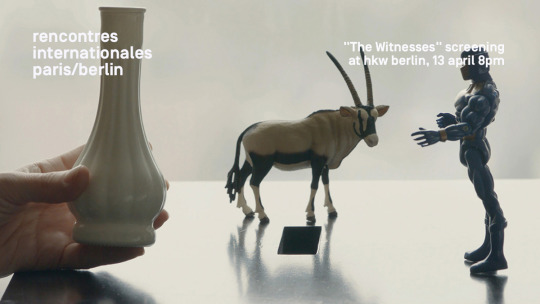


🌈 Day 5, Saturday 3 April 🌱
Happening now - another exciting day at HKW until 10pm.
⚡ 14:00-17:00 "Communicating Spaces"
⚡ 14:00-20:00 "Generation," and "VR Lab" special exhibition
⚡ 13:00 "Transmitted Images"
⚡ 15:00 "Freud Musical"
⚡ 16:00 Artist Talk
⚡ 17:00 "The Obscure Object of Consciousness"
⚡ 17:00-20:00 "Collective"
⚡ 19:00 Obsada⚡ 20:00 The Witnesses
Detailed programme: https://www.art-action.org/prog
#ripb2024#day5#newcinema#contemporaryart#berlin#HKW#video#multimedia#screening#artworks#experimental#art#cinema
0 notes
Text
AS THOUGH WE HID THE SUN IN A SEA OF STORIES


"As Though We Hid the Sun in a Sea of Stories is an exhibition and research project that foregrounds an ever-incomplete weaving of narratives of artists, curators, writers, and customary knowledge holders. It traces the many worlds that have existed in parallel, often in spite of or against the oppressive visions imagined by successive regimes—the Russian Empire, the USSR, and contemporary Russia—that have controlled areas across Eastern Europe and Central and North Asia."
https://www.hkw.de/en/programme/as-though-we-hid-the-sun-in-a-sea-of-stories
0 notes
Text
I'm really curious to see what the new "normal" after gamingmas will look like.
Are they going to stick to a posting schedule? If not, how often are they going to upload? What new thing are they going to think of to keep us on our toes? Will the level of unhingedness stay this high? Will Dalien survive? Which series are they going to continue? Is any Dan solo content coming?
#bro i just realised i have no clue hkw to use future tenses but you get the point#I also wonder how i will deal with this going forward#misty says things#dan and phil
23 notes
·
View notes
Text
being a six year old boy qnd listening to big girls dont cry and having feelings that i didnt have the socialization or mental capacity necessary to account for
77 notes
·
View notes
Text
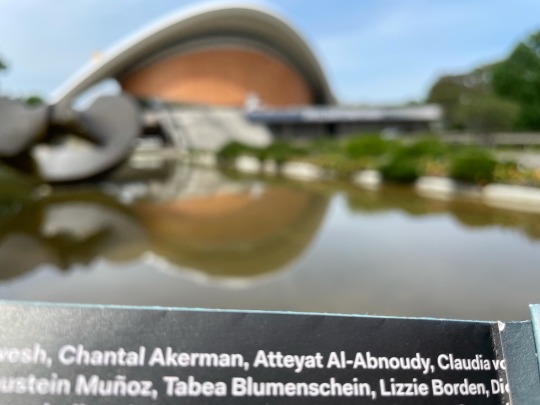
tabea blumenschein . HKW . 19/6/2022. ----------no master territories. townes archive
0 notes
Text
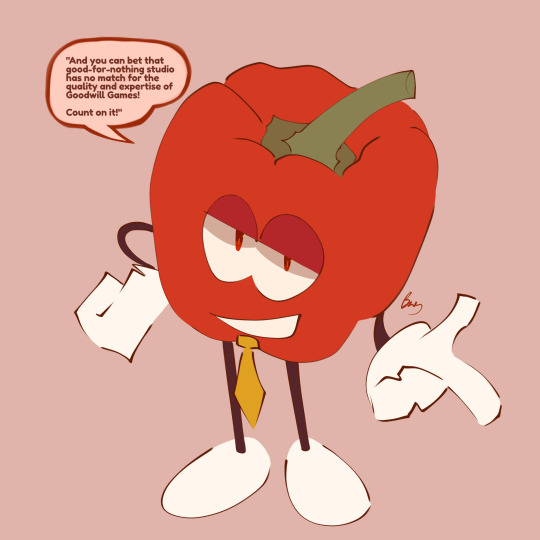
Mr pepper of Goodwill Games that i posted earlier on twitter i should probably start positng here more frequestijgly
#art#digitalart#digital art#shovelware’s brain game#shovelware studios#roblox#swbg#tags.. hkw do i use em.
36 notes
·
View notes
